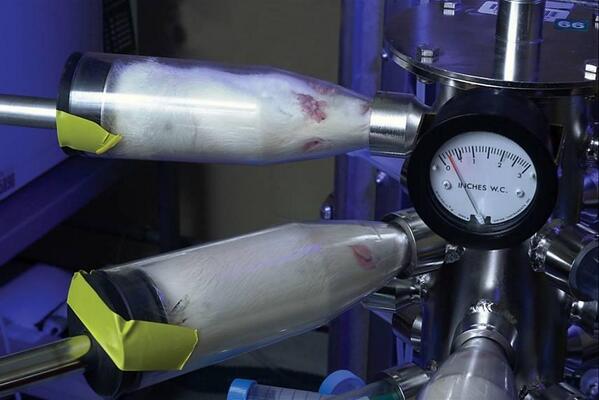Of mice and smokers

Unwilling smokers
Philip Morris International has said that the results of a new study add to the existing evidence that switching smokers to smoke-free products can be part of a successful tobacco-harm-reduction strategy for adult smokers worldwide.
The study was conducted on mice, which were exposed to air, cigarette smoke, or three formulations of e-cigarette vapors for three hours/day, five days/week for six months via a ‘whole-body inhalation system’ [a whole-body inhalation system, though not necessarily the one used in the study, is described here].
In a note posted on its website yesterday, PMI said that it had presented ‘today’ the results from a new study on electronic cigarettes at the 58th Annual Society of Toxicology Meeting in Baltimore.
‘The study demonstrates that after six months, e-cigarette vapors with and without nicotine induced a significantly lower biological responses associated with cardiovascular and pulmonary diseases than cigarette smoke,’ the note said.
‘The study, conducted in collaboration with Altria Group, Inc., assessed the biological response of mice exposed to e-cigarette vapors compared with that of exposure to cigarette smoke.
‘According to the World Health Organization, there are more than one billion people worldwide who smoke cigarettes and will continue to smoke in the foreseeable future. ‘Tobacco harm reduction can play an important role by supplementing existing tobacco control strategies to help reduce the risk of smoking-related diseases.
‘For harm reduction to be successful, current adult smokers need access to smoke-free products that deliver nicotine but with significantly lower levels of toxicants than cigarettes.’
Dr. Julia Hoeng, PMI’s director of systems toxicology was quoted as saying that the results of the study comprised “a powerful addition to the evidence showing that switching to e-cigarettes is a much better choice than continuing to smoke”.
“This study truly is a landmark study, not just demonstrating the reduced toxicity and disease risk between e-cigarettes and cigarettes but also evaluating the role of nicotine and flavors.”
